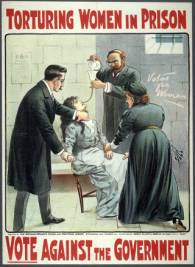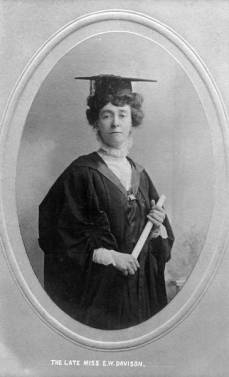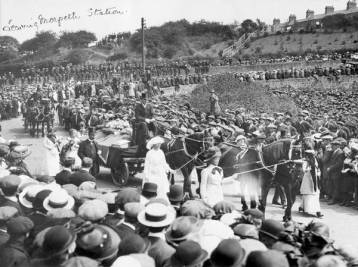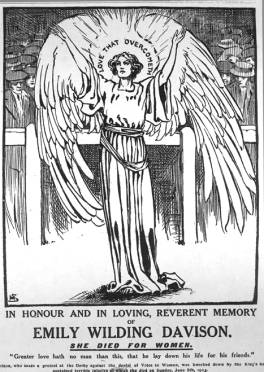Who was Emily Wilding Davison ?
Emily Wilding Davison, the most famous suffragette of all, 1909.
Emily Wilding Davison gave up her teaching post to become a career militant.
She joined the Women's Social and Political Union in 1906.
She served nine prison sentences, and endured many sessions of force-feeding ("The cat and mouse act"), for a wide range of offences including obstruction, stone throwing, window smashing, setting fire to pillar-boxes, and assaulting a Baptist minister.
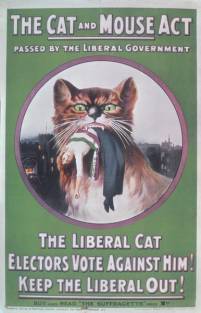 |
'The Cat and Mouse Act', 1914. Suffragette poster :the Prisoner's Temporary Discharge for Ill-Health Act, known by the WSPU as the Cat and Mouse Act. During 1913 and 1914 the force-feeding of suffragettes on hunger-strike stopped. Instead, the weakened campaigners were released from prison on a special license but were liable to be re-arrested to complete their sentence when their health improved. The large, bloody-toothed cat represents the police, the prison authorities and the Home Secretary, Reginald McKenna, who was responsible for the Act. The 'mouse' is a small and injured suffragette. |
|---|
In the 1913 Derby she ran out on to the racetrack and attempted to stop the king's horse, Anmer. Watch a 1913 video (9 seconds) : VIDE0
She received serious head injuries and died four days later at Epsom Cottage Hospital, surrounded by a suffragette guard of honour and purple, white and green flags. Emily is photographed here wearing her Holloway Badge.
A large crowd watches Emily Wilding Davison's funeral procession leaving Morpeth station, 15th June 1913. SOURCE: FUNERAL
SOURCE: EMILY DAVISON |
Source: FIRST WORLD WAR Video ("Click here to view footage of this incident * Windows Media, 9 seconds, 124KB).
P.S.: pages created by Mrs GELY for her students
